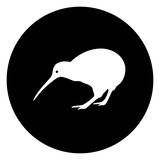
4 minute read
Navigating New Zealand’s relationship with a world superpower
By Sam Sachdeva
Published by Allen and Unwin New Zealand
Economics 101 tells us that New Zealand has to sell what we produce overseas to make any money at all. As a nation of almost 5 million, our population is simply far too small to generate the revenue we need for schools, hospitals, frigates and fire engines.
In 2008 we became the first country in the world to sign a Free Trade Agreement with China and it quickly became a massive buyer of all we could sell (those huge piles of logs on the Wellington wharves? – they go in one end of a MASSIVE factory in Tianjin near Beijing and furniture for export to America comes out the other end). 2008 was a time of political stability and nobody publically asked the, now obvious question; “What happens if we put all our trade eggs in the China basket and all our security eggs in the Five Eyes basket and the political situation changes?”….in 2023 it most definitely has changed and if you have ever asked that question, you could do a lot worse than read
Sam Sachdeva’s book to try and find an answer.
Sam hasn’t specifically addressed that question, but as a specialist international relations journalist has dedicated himself to following our relationship with China and in this book, provides a detailed overview of the nature of the relationship. He notes that many commentators either wouldn’t speak to him, or would only do so anonymously, such is the nature of the paranoia about upsetting our second largest trade partner. The book explores a range of allegations and stories of Chinese Communist Party (CCP) interference in national and local politics, clumsy attempts to suppress or influence the local Chinese media, academic freedom and anyone who seems to be either anti-China, anti-CCP or anti-Xi Jinping himself.

We’ve come to expect to see these sort of stories on a semiregular basis in the media, but when collected together and examined in detail as they are here, the book presents quite a sobering catalogue of Chinese behaviour. Although, in mitigation it has to be said, they clearly don’t send their top operatives
The Battle of Long Tan
to New Zealand… or if they do, those operatives could benefit from some training, subtlety clearly isn’t their strongpoint. The book presents a potentially worrying catalogue of incidents, but Sam has also spoken to plenty of intelligent, informed and connected people who, while highlighting concerning behaviour in one area, can provide reassurance or explanation and context in others, presenting a balanced view of the contemporary situation.
The title beautifully captures the position we as a nation find ourselves in – we are walking a tightrope. Our physical security is in one camp and our economic security in another. New Zealand must be wary as we make our way along that rope. Compulsory reading for anyone seeking to understand just how we make it along that tightrope.
From the bestselling author of Kokoda and Gallipoli comes the epic story of Australia’s deadliest Vietnam War battle
By Peter Fitzsimons
Published by Hachette Australia
Former Wallaby Peter Fitzsimons is well established as Australia’s best-selling non-fiction author. Over the years since he hung up his boots he has produced a series of thick tomes exploring some of the great historical milestones in Australia’s development. Most recently he has turned his lens to Australian involvement in Vietnam, specifically the 1966 battle of Long Tan.

For those unfamiliar with Long Tan, the story in a nutshell is that an Australian Infantry Company got into a fight (in a rubber plantation at a place called Long Tan) with a vastly superior North Vietnamese force. The diggers of D Coy, 6RAR were ably supported by an RNZA Forward Observation party and all the RAA, RNZA and US Army artillery they could call on.
Fitzsimons writes for a general audience so he has to explain things that soldiers know from experience because the majority of his audience will not have worn a uniform for their country (he did obviously, but it wasn’t like ours…). This was the first of his books I have read and it was pretty clear due to his style, why he has become such a popular author. He is a classic Aussie “hard case” and he pitches his stories squarely at middle Australia – people curious enough to want to know more about their own story, and smart enough to understand it.
This is very much a soldier’s story of the battle. It’s clear that the veterans he interviewed in researching this work didn’t have a lot of time for the higher command elements of the Task Force based at Nui Dat and at points you can’t help wonder what those individuals might say in reply to some of the more negative comments levelled at them.
The book reads almost like a transcript of a veteran telling you the story of Long Tan over a few beers. The chatty style means the story moves quickly and even at 427 pages, it clips along at a good pace and is very readable. That’s his writing style and it works for his audience, but if you’re looking for something to base a staff college paper on, this probably isn’t it. That said however his research is superb and he tells a great story.
My only real beef with the book was that he refers to 161 Battery throughout as “the 161st Battery”, which I found annoying because they’ve always been one-six-one. But, to be honest that’s not a huge deal and I otherwise recommend this to anyone looking for a comprehensive account, from the soldier’s perspective, of the biggest infantry battle the Anzacs fought in Vietnam.










